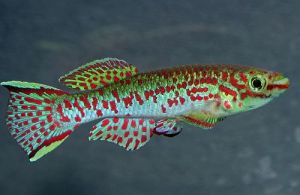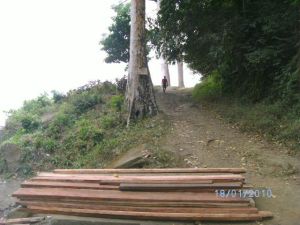
Hello Everyone,
My name is Cyrille I am the owner of Gulf Aquatics in Cameroon, Africa. Our company specializes in the collection of the rarest Freshwater Tropical Fish in Cameroon. The Crater Lakes of Cameroon are home to some of the one of the most unique eco systems anywhere in the world. There are Approximately 36 Crater Lakes are now known from Cameroon. Most have no outflows or extremely steep outflows (Kling 1987), rendering them isolated from nearby river systems. Lake Ejagham represents a special case, because it is not a volcanic crater lake but is ecologically and geomorphologically very similar to those that are. The lake’s outlet is isolated from the nearby Munaya River by a waterfall that is insurmountable for Cichlid Fishes. Its oval-shaped lake basin (approx. 1050 x 700 m diameter) has a maximum depth of 18 m.
The western equatorial crater lakes of Cameroon support a highly endemic aquatic fauna with over 75% endemism in fish. In particular, Lakes Barombi Mbo and Bermin have experienced extensive species radiations of Cichlid Fish (Stiassny et al. 1992), resulting in an index of endemic fish per area that is unrivaled on earth.
Lake Barombi Mbo is the most studied of the crater lakes in this ecoregion. At present, 15 fish species have been found in the lake, 12 of which are endemic. Except for the Clariid catfish, Clarias maclareni, all endemics are Tilapiine Cichlid Fishes. Four of the five Tilapiine genera are endemic: Konia (two species), Stomatepia (three species), Pungu (one species), and Myaka (one species).
Lake Bermin has an endemic radiation of nine Tilapiine Cichlids, all belonging to the subgenus Coptodon — a taxon that is only distantly related to the Sarotherodon of Barombi Mbo. Except for one species, Tilapia bemini, all other species in this lake were described in 1992 (Thys van den Audenaerde 1972; Stiassny et al. 1992). Although most of the Tilapiines feed on detrital material, at least two trophic specialists are currently recognized: T. imbriferna (a phytoplanctivore) and T. spongotroktis (a sponge eater).
In contrast to Barombi Mbo and Bermin, this lake was colonized both by Coptodon and Sarotherodon. Coptodon gave rise to at least five different species, whereas Sarotherodon split into two species. Except for Tilapia deckerti, all of these species are still undescribed (Thys van den Audenaerde 1968; Schliewen et al. 2001).
Lake Dissoni in the Rumpi Hills harbors one endemic poeciliid (Procatopus lacustris) and probably an endemic Barbus, and an endemic Clarias (Trewavas 1962, 1974; Schliewen 1996b).
TheWestern Equatorial Crater Lakes are considered globally distinctive for their higher-level taxonomic endemism (Thieme et al. 2005). Four genera are endemic: Konia, Stomatepia, Pungu, and Myaka.
Gulf Aquatics is the leader in export of West African Tropical Fish and Plants. This list below is a common stock list. Species availability will depend on the time of the year and other environmental factors as to what can be collected at what time.




